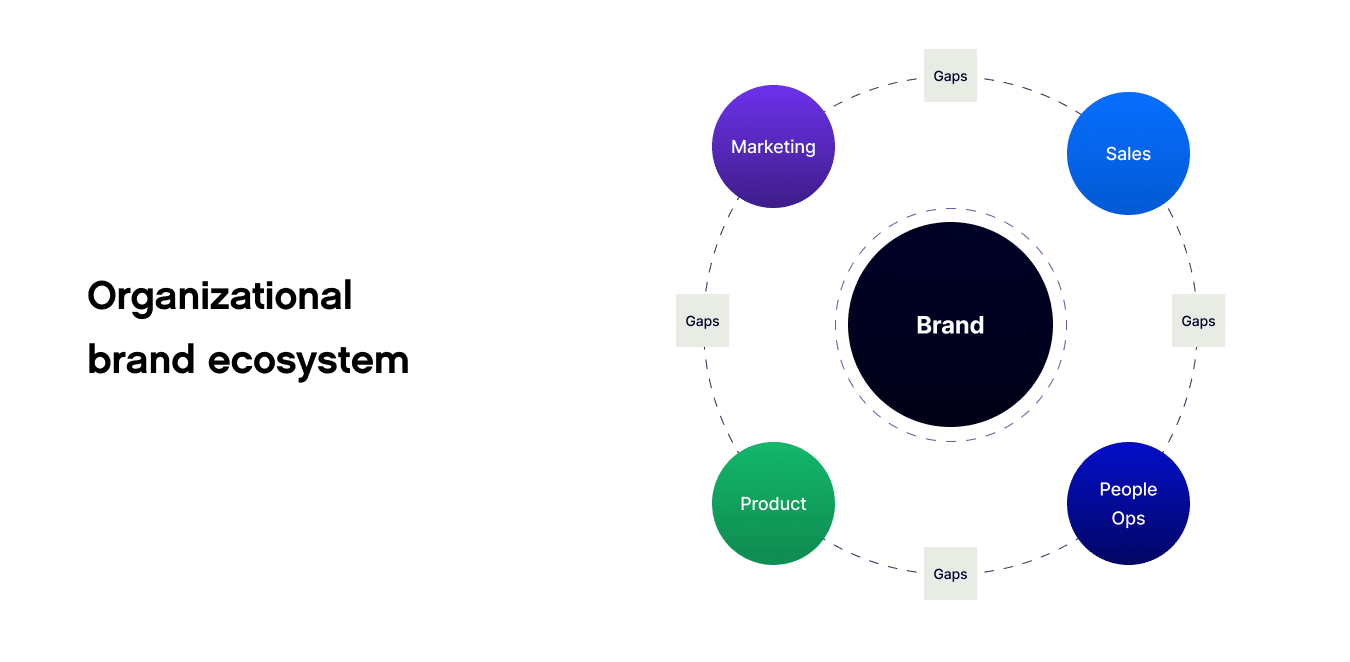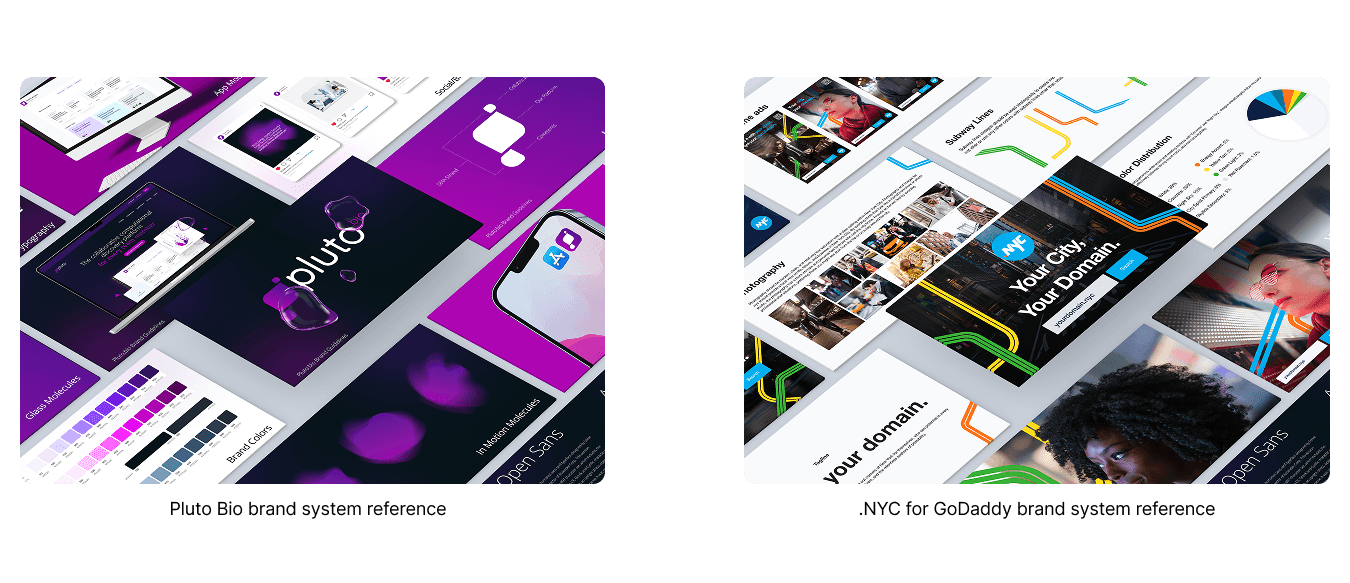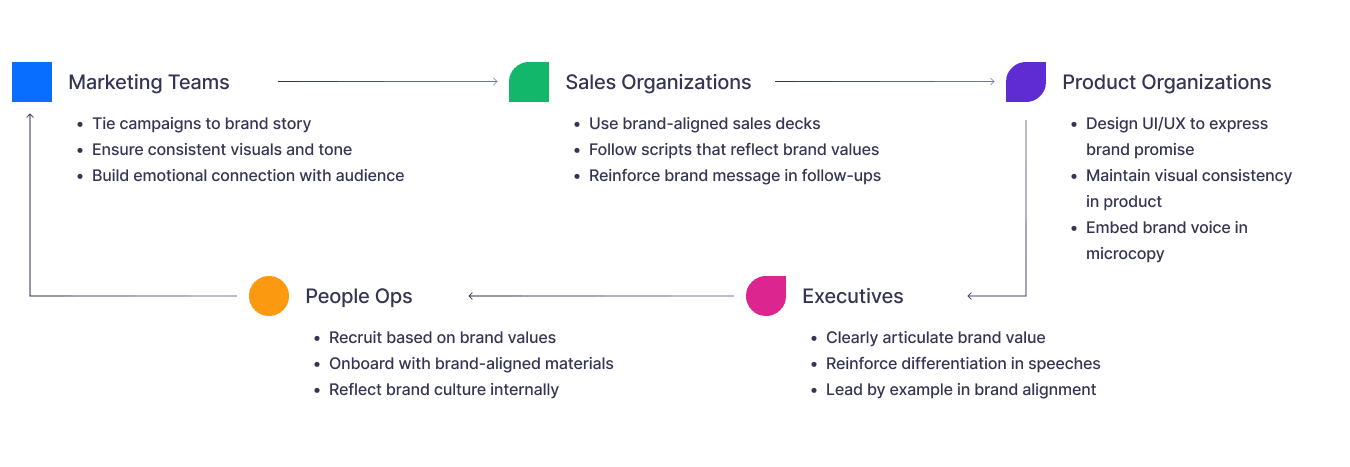
FeaturedInsights
The B2B brand strategy playbook: From collateral to clarity
Brand strategy is often misunderstood as visual flair or a marketing facelift. But in B2B, where ecosystem complexity runs deep, branding isn’t just about presence - it’s about total performance. And performance is measured by experience. Not just for end users, but for employees, stakeholders, partners, and prospects across every channel and touchpoint.
Branding strategy begins with eliminating friction - across your organization, in your sales cycle, your collateral, your product experience, your hiring materials, and even your internal communication. It’s not aesthetics that win. It’s strategic alignment.

What is a branding strategy, really?
A branding strategy is a comprehensive roadmap that aligns business strategy, brand identity, customer experience, and internal operations. It encompasses visual expression, messaging systems, and experience design - but more importantly, it connects them with your companies functional goals and operational systems.
An effective brand strategy should:
Eliminate friction across internal and external experiences
Support channel-specific marketing initiatives with adaptable core narratives
Reinforce differentiation clearly and repeatedly
Bring brand values into daily operations and decisions
Systematize your future vision into an actionable path towards realizing it
It’s not just about what you say - it’s how and where you say it, and why audiences should care.
The Gaps That Cost Companies Growth
Where does brand fall apart for B2B orgs?
Sales enablement: Messaging misalignment across decks, demos, follow-ups
Channel marketing: Inconsistent narratives across verticals or campaign silos
Content & collateral: No clear editorial POV; lack of connective tissue and story
Internal onboarding: Teams interpret brand differently - if at all
Product experience: UI/UX doesn’t match messaging or expectations
It’s rarely the tee shirts, signage, or Zoom backgrounds… These are not creative issues. They’re strategic failures. And they cost growth, trust, and velocity.

Matic’s work with Pluto Bio addressed this head-on - realigning narrative, visual systems, and touchpoint cohesion to support enterprise-level sales ambitions. Likewise, our work with NYC for GoDaddy shows how public sector communications can be unified through consistent storytelling and UX.
What a modern brand strategy includes
Let’s make this concrete. A modern brand strategy should define and support:
Positioning & messaging for target segments and verticals
Content pillars to guide storytelling and marketing output
Narrative structure for thought leadership and internal comms
Brand voice system codified across mediums
Modular visual identity that scales from pitch decks to products
Experience map tying channels to strategic objectives
Measurement plan for brand impact
10-step approach to brand strategy (that closes gaps)

Real gaps we’ve closed
TeamBuildr (SaaS): Strengthened conversion by aligning product promise with real-world experience - bridging the gap between what the brand said and how the platform performed. Explore the case
Loomly (Martech): Cut through marketplace sameness with a brand system that sharpened their POV and enabled consistent, scalable storytelling across content and campaigns. Explore the case
Pluto Bio (Health/BioTech): Elevated credibility with pharma buyers by translating deep tech into accessible messaging and enterprise-grade visual clarity. Translated public policy messaging into accessible content across web, signage, and outreach. Explore the case
Apply Brand Strategy Across Your Organization
Marketing teams: Connect campaign assets to a clear core story
Sales orgs: Enable teams with decks, scripts, and follow-ups rooted in brand clarity
Product orgs: Design UI/UX that reflects the brand promise, not just features
People ops: Align recruiting, onboarding, and internal culture with external perception
Executives: Communicate the business’s value and differentiation repeatedly and credibly

Sector-Specific Considerations
Sector | Primary Challenge | How Brand Strategy Helps |
|---|---|---|
Technology & SaaS | Product complexity and disconnect between product and promise | Clarifies value prop, aligns UX with positioning, streamlines demo and onboarding assets |
Martech | Cluttered, jargon-heavy landscape with lookalike competition | Establishes sharp POV, supports integrations with narrative clarity, enables scalable thought leadership |
Energy | Trust, innovation, and regulatory complexity | Balances modernization with legacy credibility, simplifies communication of impact and vision |
Fitness & Healthech | Dual demand for lifestyle engagement and clinical legitimacy | Crafts hybrid identity systems, reinforces wellness goals with accessible and credible UX & content |
Closing thoughts
Final word: Branding strategy is infrastructure
A strong brand isn’t decoration - it’s connective infrastructure. It reduces decision friction, increases message confidence, and creates a repeatable, flexible system that scales.
If your teams are improvising or if your audiences are confused, your brand isn’t broken, it's signaling the need to evolve.
Let’s talk about the next level and how to get there.






